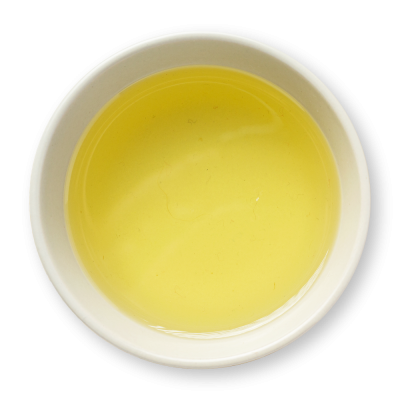
Imagine you’re sitting on your porch on a festive evening, the sky ablaze with fireworks, but instead of sharing your joy, your beloved dog is cowering behind the sofa, trembling in fear. This distressing scenario is a reality for many dog owners, with the loud, unpredictable noises and bright flashes of fireworks often causing severe anxiety in our canine companions.
If you’ve witnessed your dog showing signs of fear during firework displays, you might be wondering, how can you help them? What steps can you take to alleviate their stress?
Let’s unpack this issue together and explore some potential solutions to help your pet cope better with this widespread fear.
Key Takeaways
- Fireworks can trigger fear and anxiety in dogs due to their loud noises and bright lights.
- Certain dog breeds, such as Border Collies, German Shepherds, Labrador Retrievers, and Golden Retrievers, are more susceptible to fear of fireworks.
- Dogs may exhibit signs of anxiety during fireworks, including shaking, pacing, excessive barking, and attempts to escape.
- CBD oil for dogs can help our best friend cope with fireworks anxiety by reducing overall stress levels and promoting calmness.
What makes fireworks dangerous for dogs?
You may wonder what makes fireworks so dangerous for your dogs; it’s primarily their perception of the sudden, loud noises and bright, flashing lights as threats, triggering severe fear and anxiety. Your dog’s noise sensitivity can be elevated, making them respond negatively to the abrupt and loud sounds of fireworks.
This noise sensitivity, coupled with the bright, flashing lights, can be overwhelming for your dog, making them feel trapped and anxious.
Dogs are instinctively programmed to protect themselves from danger, and when they perceive fireworks as a threat, they can react with panic and stress. This panic may even lead them to try to escape, putting them at risk of potential harm.
There are other contributing factors as well. Perhaps your furry friend wasn’t exposed to fireworks at a young age, or maybe they’d a traumatic experience associated with loud noises. Social learning from other dogs could also play a role. If your dog sees another dog reacting fearfully to fireworks, they might imitate that behavior.
It’s important to remember that every dog is different. While some dogs may not react at all to fireworks, others may be deeply affected. Understanding your dog’s unique behavior and fear triggers can help you create a calm environment for them during firework displays.
It’s not just about shielding them from the noise and lights; it’s also about helping them feel safe and secure. With your patience, understanding, and compassion, you can help your dog navigate their fear of fireworks, improving their overall well-being and quality of life.

Which breeds are most afraid of fireworks?
While any dog can develop a fear of fireworks, certain breeds such as Border Collies, German Shepherds, Labrador Retrievers, and Golden Retrievers are often more susceptible due to their sensitive and alert nature.
These are among the most affected breeds, alongside Basset Hounds, Beagles, Siberian Huskies, Australian Shepherds, Shetland Sheepdogs, Cocker Spaniels, Cavalier King Charles Spaniels, Greyhounds, Whippets, and Dalmatians.
The behavioral signs of their fear can vary; some dogs might hide, while others may whine or show aggression. You’ll notice trembling, excessive drooling, or attempts to escape. These are all indications that your dog is struggling with the loud, unpredictable sounds of fireworks.
As a caring pet parent, you’ll want to help your canine companion manage this fear. Training techniques can be effective. Start by gradually introducing your dog to the sound of fireworks at a low volume, increasing the noise level slowly over time. Pair this with positive reinforcement, like treats or playtime, to help them associate the sound with something enjoyable.
But training isn’t the only solution. Natural remedies are available to help soothe your dog’s anxiety. Consider products like calming wraps, which apply gentle, constant pressure, or pheromone diffusers, which mimic a mother’s calming scent.
Investing in your dog’s comfort during firework displays shows not just your love, but also your commitment to their well-being. Remember, every dog is unique; what works for one mightn’t work for another. Remain patient, and keep trying different coping mechanisms until you find what works best for your furry friend.
How can you recognise anxiety in your dog?
Recognizing anxiety in your dog, especially when fireworks are involved, often involves observing for certain behavioral changes. Dogs, like people, have different ways of expressing fear and anxiety. But there are common signs of distress in dogs that you can watch for.
First, notice if your dog becomes suddenly alert or shows signs of restlessness. Flattening of ears, shaking, and trembling can be clear indicators of anxiety symptoms in dogs. Refusal to go outside or attempts to escape the house are also warning signs that your dog is feeling uneasy.
Understanding your dog’s body language can provide vital clues. Anxiety can cause behaviors such as pacing, panting, drooling, or even excessive barking and whining. These are all behavioral cues of anxiety in dogs that you shouldn’t ignore. In many cases, dogs might seek your close proximity, yearning for comfort and reassurance during such stressful situations.
Another important aspect of identifying anxiety in dogs is recognizing signs of avoidance. If your dog is hiding, seeking dark or enclosed spaces, or constantly seeking comfort from you, these are strong signals that your dog is feeling anxious.
Tips to reduce the anxiety caused by fireworks
To help your dog cope with the stress of fireworks, there are several effective strategies you can implement.
Firstly, consider distraction techniques that divert your dog’s attention from the noise. Engage them in their favorite activity, be it a game of fetch or a puzzle toy. You might also try giving them high-value treats they don’t usually get, which can create a positive association with fireworks sounds.
Secondly, behavior modification is crucial. This involves gradually desensitizing your dog to firework sounds. Start with a low volume and increase it slowly over time, rewarding calm behavior. Remember, this process takes time and patience, so don’t rush it.
Thirdly, creating safe spaces in your home where your dog can retreat to during fireworks can be beneficial. This could be a quiet room far from windows or a crate covered with blankets. Make this space cozy with familiar items like their favorite toy or blanket.
You can also seek professional help if these strategies aren’t enough. A trusted veterinarian might recommend calming aids or prescribe anti-anxiety medication. Additionally, a canine behaviorist can provide personalized behavior modification strategies based on your dog’s unique needs.
To summarize, here are the key steps:
- Use distraction techniques to redirect your dog’s focus.
- Implement behavior modification to desensitize your dog to firework sounds.
- Create safe spaces for your dog to retreat to during fireworks.
How can CBD oil help dogs cope with fireworks anxiety?
If your dog is terrified of fireworks, CBD oil for dogs might just be the solution you’ve been searching for. CBD oil can help reduce your dog’s overall stress levels, promoting a sense of calmness and relaxation. It interacts with the endocannabinoid system in dogs, which regulates mood, anxiety, and stress responses. This provides a natural, non-toxic option for anxiety relief.
As a preventive measure, CBD oil can be administered to your dog before fireworks displays to preemptively alleviate anxiety. It can also be used during the event to help manage their fear and discomfort. Additionally, the anti-inflammatory properties of CBD oil can soothe any physical discomfort or tension that your dog might experience during fireworks, contributing to their overall relaxation.
Consulting with a veterinarian is crucial when using CBD oil for your dog. They can provide dosage guidelines to ensure it’s safe and effective for your furry friend. Like any treatment, CBD oil has potential side effects that you should be aware of. These may include dry mouth, lowered blood pressure, or drowsiness.
While CBD oil can be a potent tool against fireworks anxiety, remember that it’s not the only option. Alternatives to CBD oil, like desensitization training or anxiety wraps, can also be effective. Balancing these methods with CBD oil use could lead to long-term effects of a less anxious, more comfortable dog during firework displays.
Ultimately, the goal is to create a safe, calm environment for your dog, making fireworks less of a fright and more of a distant background noise.
Take aways
Understanding that noise aversion in dogs is a treatable condition is a crucial takeaway for all dog owners. Fireworks safety for your canines involves more than just keeping them indoors during the display. It’s about recognizing the signs of distress and knowing how to react.
Vet approved health tips indicate that you should remain calm and supportive, as your reaction can influence your pet’s behavior. Creating a safe zone in your home can also make a significant difference.
This could be a room away from windows where the noise is less intense. Fill it with their favorite toys and comfort items to create a familiar and secure environment.
Immediate relief medications can also be administered under vet supervision. These are designed to alleviate the symptoms of noise aversion, providing your pet with the relief they need during these stressful events.
To recap, the key takeaways from understanding fear of fireworks in dogs are:
- Noise aversion in dogs is a treatable condition.
- A safe zone in your home can provide comfort and security for your pet during noisy events.
- Immediate relief medications, under vet supervision, can help alleviate symptoms of noise aversion.
Above all, your dog’s well-being is paramount. By taking these steps, not only do you ensure their safety during fireworks displays, but you also help them cope with the fear associated with such events. Remember, it’s always better to prevent distress than to treat it.
With proper care and understanding, you can help your pet overcome their fear of fireworks.
Frequently Asked Questions
How Do You Help a Dog With Firework Fear?
To help your dog manage firework fear, consider comforting measures, behavioral training, and sound therapy. Anxiety management is key. Consult your vet about medicinal treatments. Always provide reassurance and love during these stressful times.
What Dog Breeds Are Most Scared of Fireworks?
Breeds like Border Collies, German Shepherds, and Australian Shepherds top the breed sensitivity ranking, often displaying noise phobia causes such as fireworks or thunderstorms. It’s crucial to learn breed-specific coping mechanisms for your pet’s comfort.
Why Are Only Some Dogs Afraid of Fireworks?
Some dogs fear fireworks due to genetic predisposition, sensory overload from firework frequencies, or anxiety triggers from past experiences. Understanding canine perception can help you alleviate your pet’s stress during these loud events.
Can Dogs Get PTSD From Fireworks?
Yes, your dog can develop PTSD-like symptoms from fireworks. They may show increased vigilance, avoidance behaviors, and strong startle responses. It’s crucial to manage their anxiety and guide them through the recovery process.
Conclusion
So, there you have it. Fireworks don’t have to be a nightmare for your dog. By recognizing the signs of anxiety, implementing calming techniques, and considering natural remedies like CBD oil, you can help your dog cope.
Remember, your dog’s comfort and safety are paramount. Now, with these tips in hand, you’re equipped to transform your dog’s fear of fireworks into a thing of the past.
























